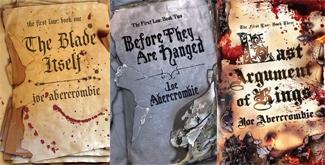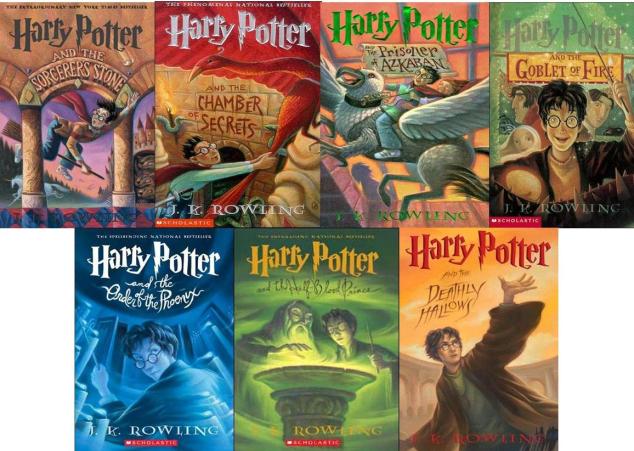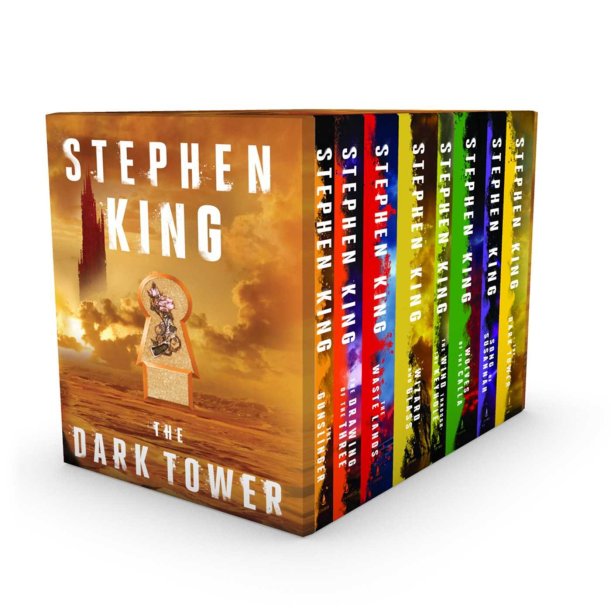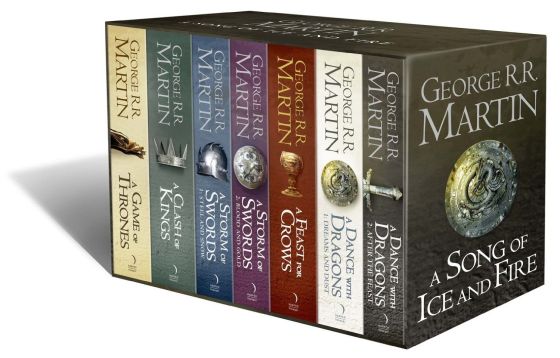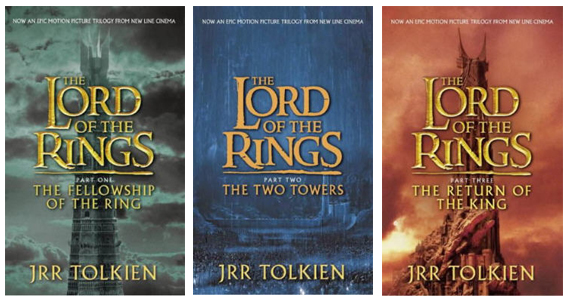Some books don’t get their proper due. So today, we’re going to look at some of the most underrated fantasy books ever written. Let’s give them the credit they deserve!
1. Best Served Cold by Joe Abercrombie

(Image via Goodreads)
I believe Best Served Cold is Joe Abercrombie’s all-time best—and he’s got some amazing books in his catalog.
The setup is simple. Monza Murcatto, a charismatic mercenary captain with a bloody reputation, is betrayed by Grand Duke Orso, the man who’s employed her for years. Orso and six other conspirators help kill Monza’s brother and nearly kill her, too. Yet Monza survives, and swears vengeance on all seven of them.
I really dig this book’s structure. There are seven distinct sections, each taking place in a different city of Styria (the book’s principal setting), each chronicling Monza’s revenge upon a different man. She collects a diverse cast of dangerous people along the way, including Caul Shivers (a northman trying to reform his life), Castor Morveer (a poisoner with an inflated opinion of himself), Shylo Vitari (a former torturer and dedicated mother), and Nicomo Cosca (a drunk with a bad habit of betraying employers). Each provides their own value to the story.
Why is it underrated? The book made a minor splash during its initial release in 2009, yet hasn’t been discussed much since. I think we need to recognize this one for what it is: one of the best fantasy books of the 2000s!
Look, I know that’s a strong claim. I wouldn’t make it if I didn’t really feel that way. Best Served Cold has outstanding characters, a non-stop plot, high stakes, and a vivid setting. In addition, it’s the best blend of heist thriller and epic fantasy I’ve ever read. Please read this book. You’ll be glad you did.
2. The Shining Girls by Lauren Beukes

(Image via Goodreads)
I’ve written about this book before…but whatever. It deserves the buzz!
The Shining Girls is an innovative thriller with a strong element of contemporary fantasy (not to mention a very cool structure). Set in the modern day, the book tells the story of Kirby Mazrachi, a girl who was never supposed to have a future. She’s the sole survivor of an attack by Harper Curtis, a truly bad dude who kills women not just in his own era, but others. How does he do that, you ask? That’s the fantasy element. He discovers a house in depression-era Chicago that allows him to travel through time.
I first heard of this novel when its author, Lauren Beukes, did an interview on one of my favorite podcasts, The Geek’s Guide to the Galaxy. One of the most striking things she said in that interview was that she was sick of stories where the serial killer got all the narrative attention. With The Shining Girls, she wanted to write a serial killer story about the victims. She succeeded.
Why is it underrated? Well, I love Goodreads—but when it comes to this book, they’ve got it all wrong! Out of over 35,000 votes, the book’s average rating is a 3.49 out of 5.
I’m appalled by that rating. Beukes’s approach to the subject matter is something we must continue to emulate. I think people are realizing that more and more now, yet she was onto it years ago. Plus it’s just a great book.
Please do yourself a favor and read it. Then rate it. And please, give it the rating it deserves (hint: it’s better than 3.5 stars).
3. The Bone Clocks by David Mitchell

(Image via Goodreads)
Another novel with a daring narrative structure, David Mitchell’s The Bone Clocks follows a woman named Holly Sykes throughout her life. The book is divided into six sections, the first beginning with a 15-year-old Holly in 1984 and ending with a 74-year-old Holly in 2043.
No matter what you’ve read, I promise this book is nothing like it. It’s about a war between two psychic factions, one that Holly ends up embroiled in. In fact, it’s almost a little misleading to call it a novel—perhaps a series of interconnected novellas would be closer to the mark.
One of my favorite parts of the reading experience is figuring out what happens between sections of the book. For example, we begin in 1984 with a young Holly. We then leap ahead seven years to 1991, where we meet a grifter named Hugo Lamb. Hugo meets a bar manager in Switzerland whom he’s immediately attracted to. We don’t know who she is at first, but soon we find out. She’s Holly Sykes!
Each section carries with it a little surprise like that. It’s amazing and fun to see how they all connect, how all the characters evolve and interact. Plus, there are some fantastic supernatural element scattered throughout, including telepathy and reanimated corpses. What’s more, Mitchell is a brilliant prose stylist.
Why is it underrated? Well, people recognize its awesomeness, yet it’s overshadowed by Mitchell’s magnum opus, Cloud Atlas. I agree, Cloud Atlas is amazing. It too is one of my favorite books. But let’s not allow that giant to distract from Mitchell’s other work. The Bone Clocks is an amazing book in and of itself, and I would be sad if people forgot that.
4. Three Moments of an Explosion by China Miéville

(Image via Goodreads)
Another book that released to initial praise, then seemed to fall into obscurity. Three Moments of an Explosion has a fantastic title. The stories within are even better.
To a certain extent, I understand why it’s been forgotten. After all, short story collections don’t have the longevity that novels do. Still, I think Miéville’s collection should get more love than it does. These stories range from odd to strange to bizarre to downright horrifying.
“The Dowager of Bees” is one of my favorites. (Being a Magic: The Gathering player, I really dig stories with copious shuffling.) It’s about a card shark who stumbles across a magical card which inexplicably appears within his deck. “In the Slopes” tells the bizarre tale of archeologists who uncover some sort of alien life form. Then there’s “Säcken,” which is quite frankly one of the most disturbing stories I’ve ever read.
This collection is fantastic. I encourage you to read it!
5: Fire & Blood by George R.R. Martin

(Image via Goodreads)
Fire & Blood is a history of the Targaryen family. It takes us from the founding of the dynasty through its near breaking during the Dance of Dragons, then into the war’s aftermath. It’s not a complete chronicle of the line, so there should be a sequel to finish things. (Hopefully it doesn’t release before The Winds of Winter. Otherwise, there might be a riot.)
I love Martin’s work, both within A Song of Ice and Fire and outside it. So I was disappointed to see such a negative reaction to this book. Upon release, a lot of people said something to the effect of, “Whatever. Where’s book six?”
I get it. I want The Winds of Winter, too. But this one is still really good!
Fire & Blood is filled with fascinating characters, rich conflicts, and ample imagination. Though written as a history, it’s certainly not boring. What’s more, this book seems to drop hints here and there for what we might expect in the remaining stories of the main series.
Please don’t underrate this book. If you enjoy A Song of Ice and Fire, you’ll enjoy this, too.
Any I Missed?
That’s my list. These books are awesome and I wish they got more love. What are some that you’d like to see more of? Let me know in the comments!
Kyle A. Massa is a speculative fiction author living somewhere in upstate New York with his wife, their cats, and their dog. He has written two books and numerous short stories, both published and yet-to-be published. He enjoys unusual narrative structures, multiple POVs, and stories about coffee.







